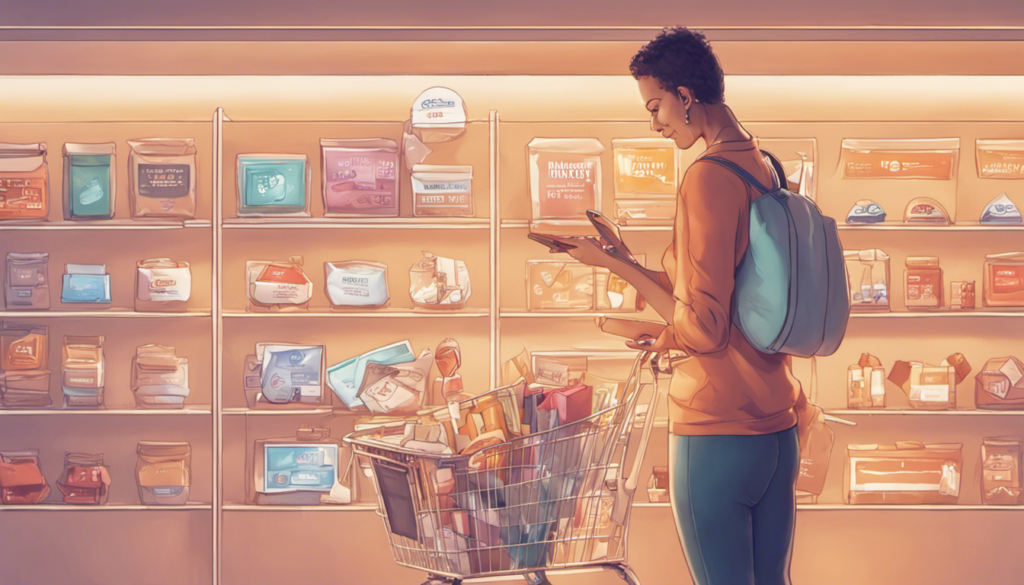July 14th, 2022 | 5 min read

Hey E-Commerce Retailers, did you know that up-selling is 20x more effective than cross-selling? Better yet, did you know that 10%-30% of all e-commerce revenue comes from product bundles?
With that much potential revenue, product bundling is not something e-commerce retailers can afford to overlook. In this article, we offer a comprehensive guide to product bundling that details exactly what the strategy is, successful examples to emulate, and the key reasons why so many businesses choose to bundle.
Product bundling is the marketing strategy in which many items are advertised together and sold for a single price. For example, bed sets, including bed frames, lamps, side tables, and dressers, are sold together to encourage customers to buy more products.
Logically this makes sense. Say you were only looking to buy a bed frame and a lamp, but you could also have a matching dresser and side tables for only a couple hundred dollars more. In turn, bundling allows store owners to eliminate slow-moving inventory and increase revenue.
On a lower tier, McDonald’s Happy Meals are an example of product bundles. Instead of selling each part of the meal (a hamburger, fries, and a soft drink) separately, they sell them together to increase sales of the low ticket or less desired items.
Duoplane can automate sending POs, inventory syncing, & shipment feeds. Get in touch with us to start your free trial!

The psychology of product bundling is to reduce the “pain of paying” experienced by a customer. Instead of feeling the weight of purchasing a series of items on their own, customers are offered a package deal for complimentary products.
This mentality can be so powerful that often, customers opt to purchase bundles even when they are not saving any money. Soxy.com, with a bundling strategy, raised its AOV 358%, even though many of its bundles are more expensive than purchasing the same number of socks individually. This is because when items are bundled, customers are less focused on the prices of the individual items and, in turn, automatically consider the bundle a better deal.
A study from Harvard Business School reviewed a strategy Nintendo used to sell its games and consoles. Instead of selling each product individually, the company bundles two, resulting in over 1 million dollars in revenue and over 100,000 units sold. Conversely, when Nintendo only bundled games together, sales decreased by 20%.
While this phenomenon is not limited to Nintendo, the study shows the potential of bundling to increase order value and revenue. The main takeaway? Bundling items increases sales because it helps to improve the customer’s perceived value of products. Additionally, bundling helps increase average order value by encouraging shoppers to purchase more items than they would otherwise. This, in turn, usually results in a more expensive total transaction.
Product bundling can be a great strategy to eliminate surplus inventory or push out slow-moving inventory. The logic is simple: bundle popular products with slow-moving inventory to help sell less-desirable items.
Similarly, when you stock an older product with a more popular one, you create a new product. This gives a new life to your old inventory.
For example, many fast fashion retailers sell jewelry bundles with more popular items like earrings and necklaces with less popular accessories like anklets. By tying the less popular anklets to more popular and complimentary goods, these retailers can move more anklets overall.
Bundling can provide discounts, engrain upsells into packages, or reduce price comparison shopping. These are effective ways of increasing revenue, as they steer customers away from pricing individual items.
This psychology plays out every time we purchase a new Apple product. While many of us have the correct charger at home, Apple still includes a “free” changer with the purchase of your new device. We all know that the charger is not free; instead, it is factored into the final ticket price. Apple, like many other companies, chooses to include a charger because they know that many of us would not purchase a new charger on our own given the opportunity.
Similarly, when products are left unbundled, each new product presents a unique buying experience for the customer. This can lead customers to cut corners or even refuse to purchase anything altogether because they feel overwhelmed. However, when a customer is presented with a bundle, even if it includes some items they do not “need,” many will opt for the single price tag to save time, effort, and stress.
Pricing aside, bundling allows you, as a retailer, to ensure that each customer receives the most upgraded experience possible. For instance, if you are selling hair tools, you know that including hairspray, a leave-in-conditioner, and dry shampoo will create the best results when using your heat tools. By including these items, you are leaving customers will the best representation of your brand.
Many retailers can increase product awareness for lesser-known, complimentary goods by employing a product bundling strategy. These products are typically not required but can enhance the customer experience.
For example, DIY nail polish starter kits typically include the necessary items like polish, top coat, base coat, and nail file. A buffer, however, is optional to the experience. While one is not likely to purchase a buffer on its own, when it is included in a package of necessary products, you place the buffer on your customer’s radar. After seeing what a buffer adds to the experience, your customers may make a stand-alone purchase next time.
It is no surprise that shipping costs add up; when possible, it makes sense for retailers to package items together to reduce the cost and logistics spent on shipping and routing packages.
Instead of sending out a series of small items separately, you can not only sell them all together but package them all together as well.
The best part? Using the bundling strategy, you can even reduce returns (and thus return shipment costs). You can dramatically minimize return rates simply by calling an item in your bundle a “free gift.”
Did you know that bundling can increase customer loyalty? This is because bundles allow customers to try several products at once. As such, bundling gives buyers more chances to find items they love (and will hopefully repurchase).
Statistically, this makes sense. If a customer only tries out one or two varieties of your product, they are less likely to find one worth repurchasing than if they had sampled six types.
Because bundling does most of the “work” in the buying journey for the customer, it can effectively encourage a trial and a follow-up visit to your store to re-up on their favorites.
We’ve been the industry-leading solution to automate dropshipping operations for over 12 years. Check out our reviews page to learn why our clients love us.

Overall, product bundling is a proven way to increase perceived product value. Additionally, it is a very effective strategy to push out slow-moving stock, raise product awareness, and enhance your customer experience.
Sometimes bundles can be difficult to manage manually. What if one of the items in your bundle is out of stock? What if items sell quicker outside your bundle and your supply chain cannot keep up?
Many retailers opt to use a sophisticated drop ship automation platform to keep inventory levels in check. When Duoplane tracks inventory for products in an e-commerce platform, you do not want products with an inventory value of zero (out-of-stock items) to be sold. Bundles that include out-of-stock items associated with that bundle should not be available for purchase.
Learn more about how Duoplane manages bundles in our support article.
This post was last updated on Aug 17, 2023.
Bundling, a marketing strategy where multiple products are sold together as a single package, often leads to increased profits for businesses. By offering products at a combined lower price than when purchased separately, companies can incentivize customers to spend more, overall increasing your average order volume (AOV). Additionally, bundling helps in moving less popular products alongside bestsellers, optimizing inventory and boosting sales. However, it’s essential to ensure that the perceived value of the bundle surpasses its price to maximize profitability.
In the realm of dropshipping, bundling often revolves around complementary products that cater to a specific niche or hobby. For instance, consider a dropshipping store focusing on home gardening:
A “Gardening Starter Kit” bundle might include:
By bundling these items together, the dropshipping store not only provides value for budding gardeners looking for an all-in-one solution but also increases the AOV, making the most out of each sale.
Bundle offers come with a range of advantages:
Increased Sales: By offering a package deal, companies often see a boost in the overall volume of sales.
Inventory Management: Bundling allows businesses to move slower-selling items with popular products, ensuring better inventory turnover.
Enhanced Perceived Value: Customers often perceive bundles as getting more for their money, even if the savings are minimal.
Cross-selling Opportunities: Bundling introduces customers to products they might not have considered purchasing initially, promoting a broader range of the company’s offerings.
Competitive Differentiation: Offering unique bundles can set a company apart from its competitors, potentially drawing in more customers.
While bundling offers numerous benefits, it also comes with challenges:
Perceived Value Mismatch: If customers don’t see the value in one of the bundled items, it might deter them from purchasing the entire bundle.
Profit Margin Concerns: Companies must ensure the discounted bundle price doesn’t severely impact the profit margins of the individual products.
Complexity in Management: Keeping track of bundled products can complicate inventory management, especially if some items sell well individually but not in bundles.
Cannibalization: There’s a risk that the sales of a bundled product could eat into the sales of individual items, potentially decreasing overall profits.
Customer Resistance: Some customers prefer choice and might resist feeling “forced” into buying a bundle, especially if they don’t want all the items included.
Duoplane is a dropshipping automation software built by dropshippers, for dropshippers. We’re here to help you streamline your ecommerce retail fulfillment operations and automate order routing, inventory syncing, shipment feeds, and more.
Don’t just take our word for it – check out our reviews and case studies to learn why we’ve been the industry-leading solution for over 12 years, assisting over 300 retailers in onboarding over 2000 vendors and 3PL warehouses.
Experience the best dropshipping automation software risk-free with our 14-day free trial. Our dedicated onboarding specialists will guide you through the setup process, ensuring you’re ready to hit the ground running.
IF YOU DROP SHIP,
THEN YOU’LL LOVE DUOPLANE.
Duoplane intelligently and automatically routes orders to the right vendor or warehouse.
Keep everyone on the same page and save time by allowing vendors to manage their orders.
Automate vendor inventory feeds to keep your product catalog accurate.
Stay on top of your books by connecting with your accounting system to sync vendor invoices.
Streamline your operations and centralize orders from all of your e-commerce channels
Manage the full order cycle, including changes, shipments, returns, and order exceptions.
Duoplane connects to your existing systems to minimize manual effort by you or your team.
Provide feedback to vendors using actionable performance metrics.
Curious what Duoplane can do? See for yourself with a free trial.
Get in touch with us today!